Climate change litigation in Africa: Current status and future developments
Climate change litigation is increasing steadily worldwide, although few cases have been filed yet in Africa.

By Mukund Dhar, Africa Interest Group Leader
Our seventh edition of Africa Focus focuses on the potential for transformative changes within Africa during a time of historic global transition—not just from a COVID-19 to post-COVID-19 world, but against the backdrop of the United Nations Climate Change Conference COP26 in Glasgow, Scotland.
Issues around balancing greenhouse gas emissions against the development and use of natural resources as Africa industrializes and seeks to overcome roadblocks and challenges to growth and climate change-related challenges and vulnerabilities against GDP growth and increasing prosperity will be seen increasingly across sectors, industries and geographies in Africa. These discussions are already defining the way in which governments, investors, lenders, communities and other stakeholders view opportunities and investments in Africa and will do so more directly and more frequently in the coming years.
What does this mean for the world of business? Litigation related to climate change, a now well-established trend in Europe and North America, seems to have reached Africa, too. In "Climate change litigation in Africa: Current status and future developments," we outline signature cases and examine climate-related matters that might trigger challenges and disputes across Africa.
Equally, we all recognize that there are increasing investment opportunities when it comes to renewable energy. Seven of the ten sunniest countries in the world are in Africa, and wind power is no longer a novel feature in the increasingly sophisticated energy landscape in Africa. In "Renewable energy in Africa: Update in the era of climate change," we explore the significant opportunities for wind, geothermal and hydropower, too.
US foreign policy toward Africa has undergone significant shifts under the Biden administration. In "US government agencies focus on Africa," on the continent and their focus and how that ties in with both energy transition and renewable energy. In "Debt: Outlook for Africa brightens after challenging first half to the year," we discuss recent successful loan and bond issuances by African borrowers, investor resilience and lender interest in high-quality credits throughout the region.
Africa is experiencing a boom in M&A. In "M&A transaction terms: Comparing Africa to Europe," we contrast terms that typically apply to African M&A transactions, with those in Europe. And "African M&A stages a comeback" explores how African transactions appear to be highlighting a renewed sense of confidence among dealmakers. Acquisition and divestment strategies in Africa have become highly sophisticated. As a case study, "Acquisition financing in an era of energy transition" describes the January 2021 sale of a 45 percent stake in Nigerian Oil Mining Lease 17 (OML 17) and related infrastructure assets, using an innovative, first-of-its-kind hybrid financing structure.
Finally, "Southern Africa's PGMs are on the rise" explains how platinum group metals (PGMs) are increasing in southern Africa mining, on the back of demand for net-zero and the green economy.
Climate change litigation is increasing steadily worldwide, although few cases have been filed yet in Africa.
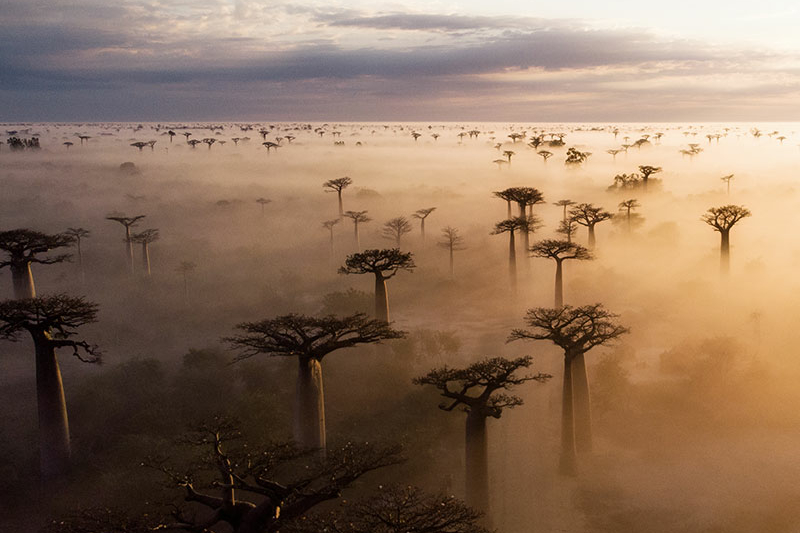
Africa offers vast potential for renewable energy deployment and investments.
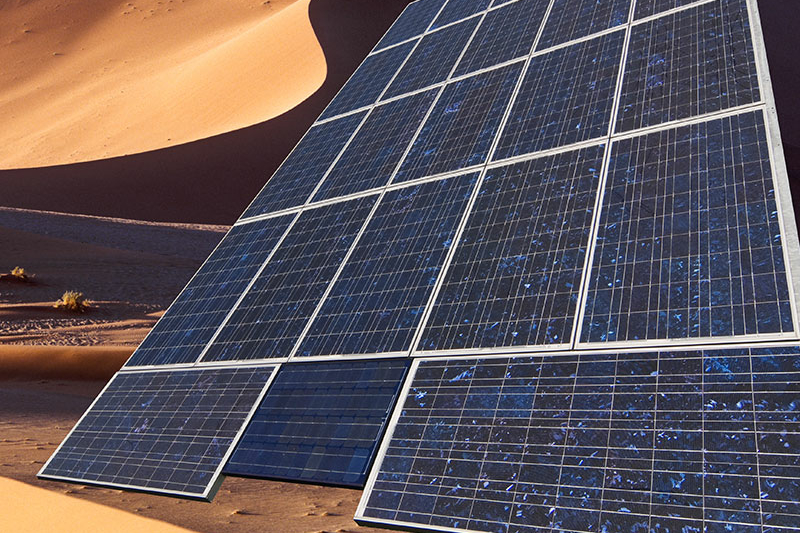
Significant differences exist between terms that typically apply in M&A transactions in Africa and Europe.
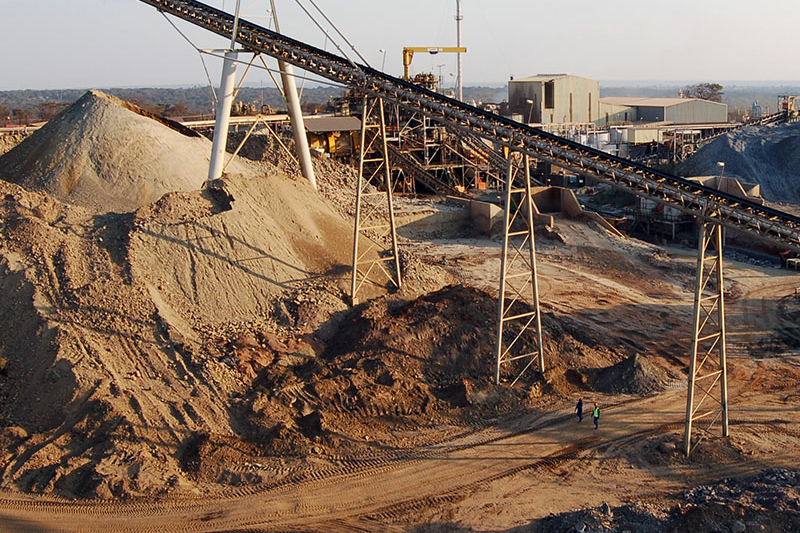
H1 2021 dealmaking within the continent appears to be turning a corner.
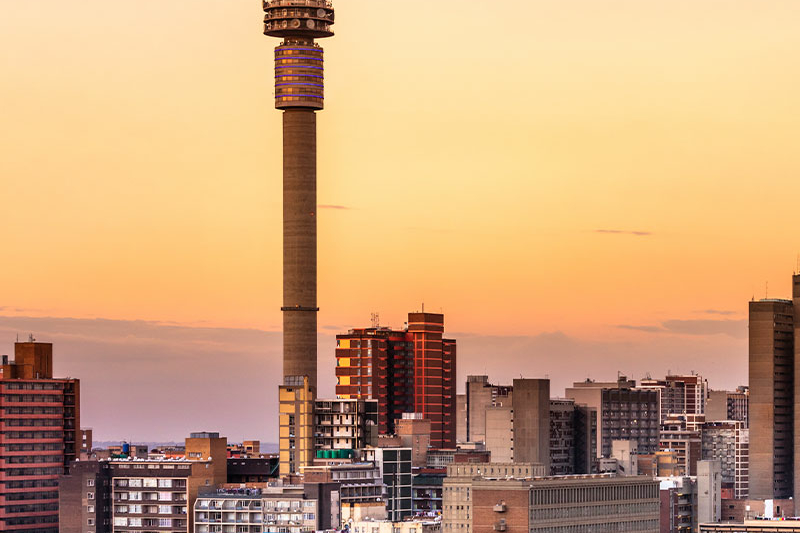
Africa is a priority for several Biden administration agencies working in development finance.
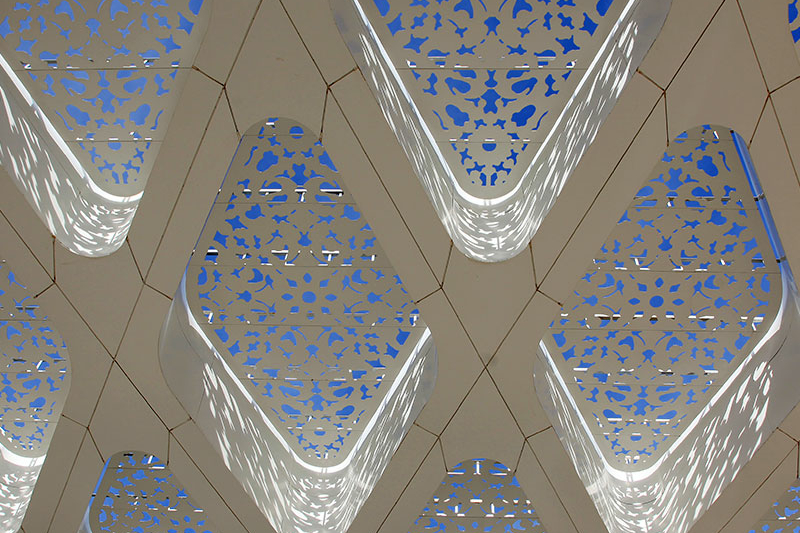
Lender caution following Zambia's debt repayment default in 2020 has weighed on African debt issuance, but successful raisings by high profile borrowers show that investor appetite remains resilient.
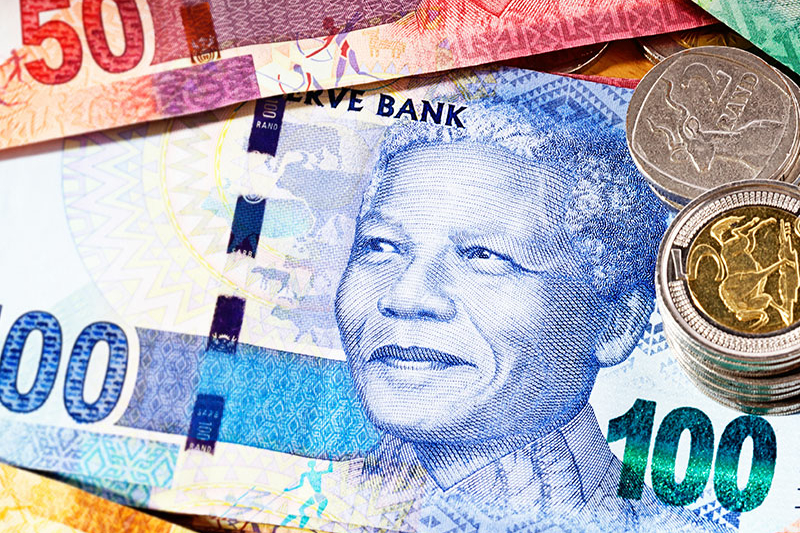
An innovative, first-of-its-kind hybrid acquisition financing in Nigeria.
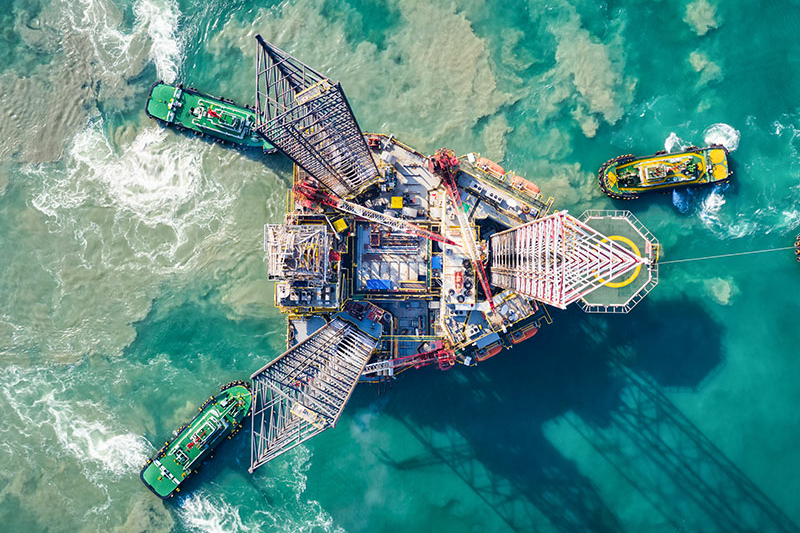
PGMs are helping Southern African mining remain relevant and contributing to a global clean and green transition.
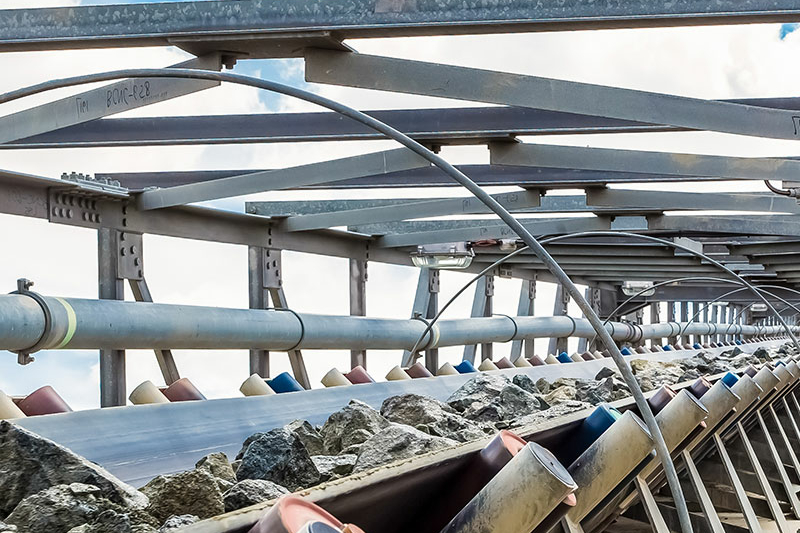
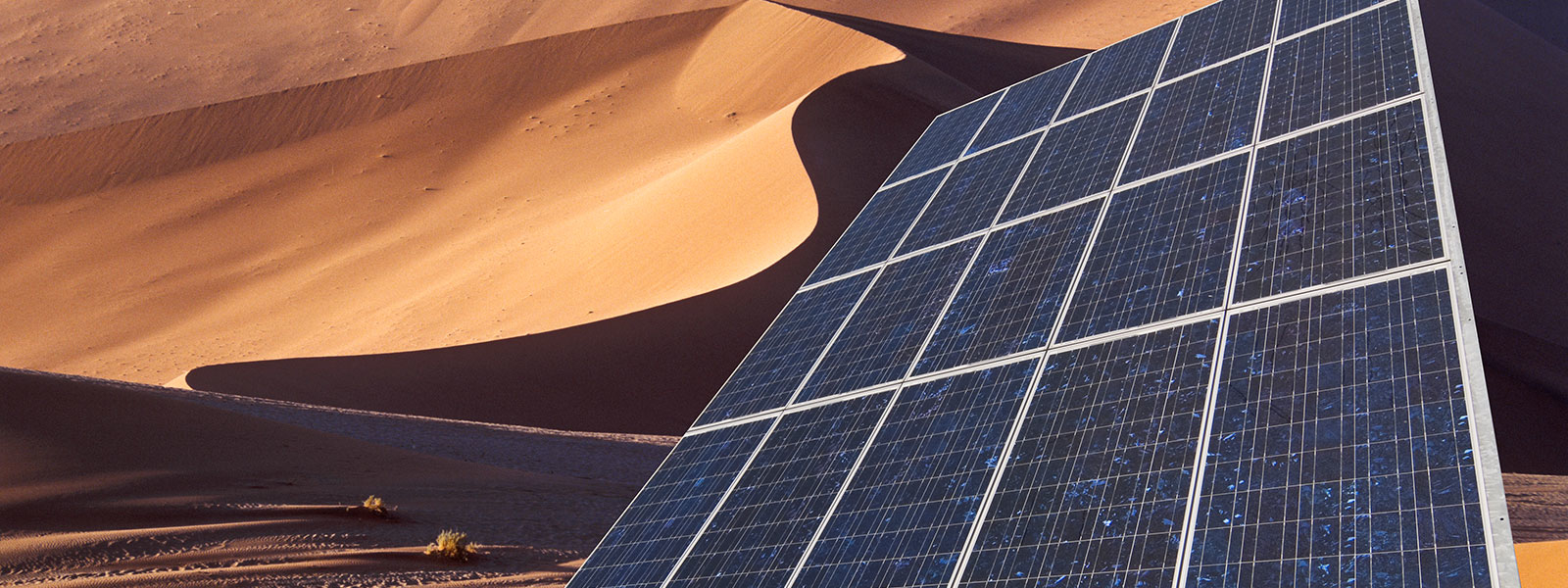
Africa offers vast potential for renewable energy deployment and investments
Subscribe to receive Africa Focus
< 1%
Africa's share of global renewable energy investment.
Source: miningreview.com
This article reflects changes in the rapidly evolving and crucial field of renewable energy in Africa.
Currently, the International Renewable Energy Agency (IRENA) estimates that with the right policies, regulation, governance and access to financial markets, sub-Saharan Africa could meet up to 67 percent of its energy needs by 2030.1 With the right policies in place and investments secured, nearly a quarter of those energy needs could be met through indigenous, clean, renewable energy.2
Africa's contribution to greenhouse gas emissions historically has been negligible, and currently comprises less than 2 percent of the world's total.
At the same time, African countries collectively are expected to commit to reduce the continent's contribution to greenhouse gas emissions by 32 percent by 2030, through a strategy to be presented to the United Nations Framework Convention on Climate Change before COP26 in November 2021.3
Unlike its contribution to emissions, the impacts of climate change on Africa have been disproportionately severe, and it is feared that the continent will carry a large share of the burden of climate change—especially if the world fails to limit further increases in average temperatures. This article explores the current outlook for investments in renewable energy projects across Africa.
Historically, Africa’s contribution to greenhouse gas emissions has been negligible
According to the Brookings Institute, climate change's impacts in Africa will likely include lowered crop yields, reduced agricultural and labor productivity, and damage to human health. An increase of three degrees Celsius (the assumption if there are no major changes in the world's social, economic and technological trends) is forecast to decrease Africa's gross domestic product (GDP) by as much as 8.6 percent per year after 2100. Limiting the increase to the 1.5 degrees Celsius specified in the Paris Agreement will do significantly less harm, decreasing GDP by only 3.8 percent per year after 2100 (see Figure 1).
Yet, Africa's energy demands are projected to triple by 2030.4
Lack of access to electricity is only one of the challenges that Africa faces, but it is one of the most significant obstacles to socio-economic development. And transitioning from energy generated through fossil fuels to energy generated through renewable resources contains its own challenges.
The impacts of the COVID-19 pandemic have driven African sovereign debt levels to unprecedented heights, at the very time that more investment is required in order to close the energy and infrastructure gap with renewable energy. The rationale for the developed world to help is both moral and practical: moral, because industrialization in the developed world caused the climate-induced harm that Africa is suffering; and practical, because increased instability and conflict in Africa will impact the developed world, especially Europe, with increased migration and security concerns diffusing to well beyond Africa.
The private sector is currently the driving force behind much of the renewable energy projects in Africa. However, regulatory regimes and "ease of doing business" can make these investments difficult at times. State-owned enterprises (SOEs) lag behind the private sector, and will likely continue unless more African governments reform their SOEs and their energy sectors more generally. For instance, competitive procurement for electricity supplies could offer opportunities in renewable energy to African institutions and markets and drive down the cost of power. As an example, South Africa's Renewable Energy Independent Power Producer Procurement (REIPPP) program and the World Bank and International Finance Corporation's Scaling Solar Program have driven the price of solar-generated energy to as little as US$0.05 per kilowatt-hour5.
Africa currently accounts for more than one-sixth of the world's population, but it generates only 4 percent of the world's electricity.
Furthermore, South Africa and the countries north of the Sahara account for three-quarters of the continent's energy consumption.6 Close to 600 million Africans have no access to electricity,7 and 780 million Africans rely on traditional solid biomass (mainly fuelwood and agricultural waste) for cooking.8 Nearly 80 percent of those lacking access to power across sub-Saharan Africa live in rural areas.9
US$1 trillion
needed over the next 20 years to meet Africa's power demand.
With its strong supply of wind, sunshine, hydropower and even geothermal resources, Africa offers great potential for renewable energy deployment and investment.
Enhancing access to power generally across the continent is a core objective of both the African Union's Agenda 2063 and the national development plans of nearly all African nations. Renewable energy technology has a crucial role to play in achieving these objectives (see Figure 2).
Africa enjoys considerable opportunities to deploy renewable energy. A study by the University of California, Berkeley, mapping out the location and energy potential of renewable energy sources in Eastern and Southern Africa shows that, although the energy generation resources are vast, they are not evenly distributed10 (see Figure 3). Some of Africa's most oil gas-rich nations are leading the way in the move to renewable energy in order to diversify their economies from overdependence on and reduce demand for oil.
Hydroelectricity offers viable solutions for up to one-third of the African nations. On a continent where frequent and severe droughts plague many regions, though, using rivers for power generation can be controversial. Environmental and socio-economic impacts of inundating large catchment areas also mitigate against large hydropower projects where other viable options exist. As with other models of centralized power generation, distribution networks associated with large hydropower projects are expensive to both construct and maintain. They also represent security risks in parts of the continent where social unrest exists.
Smaller, micro-hydro projects and other regional and local renewable power generation projects—including wind, solar and geothermal—present alternatives that may become more prominent in future power generation planning for Africa.
As of July 2021, all but two African countries—Eritrea and Libya—have ratified the Paris Agreement within the United Nations Framework Convention on Climate Change (UNFCCC).11
The Paris Agreement deals with greenhouse-gas-emissions mitigation, adaptation and finance, starting in the year 2020. It requires that each country determine, plan and regularly report on the contribution that it will make to mitigate global warming. Although no mechanism exists to compel nations to set specific targets by a particular date, the expectation is that targets should exceed those previously established.
Driven by the Paris Agreement and general concerns about the impact of climate change on the continent, African renewable energy initiatives are gaining momentum.
Independent power producers (IPPs) in South Africa have initiated 95 projects since the commencement of the REIPPP. Existing projects concluded under the earlier bid rounds are now fully operational, with a new tranche of projects under Round 5 issued in 2021.12 A report by the South African National Energy Regulator indicates that these projects will have an achieved capacity of 3271.25 MWs when they are fully operational.
The GET FiT Uganda initiative aims to add an installed capacity of 158 MWs of clean renewable energy to Uganda's national grid by implementing 17 projects. To date, Uganda has commissioned 14 small power plants, with the last three expected to be commissioned in 2021. Three of the projects are small hydropower plants with a total installed capacity of 36 MWs.13
The main objective of the GET FiT Program is to assist East African nations in pursuing a climate-resilient low-carbon development path to promote growth, reduce poverty and assist in the best way possible with climate change mitigation. The Zambian government adopted GET FiT Zambia in October 2017 with the aim of procuring 200 MWs of renewable energy projects over three years. In 2015, Namibia introduced the Interim Renewable Energy Feed-In Tariff Program, which has attracted investments mainly in solar generation.
The Batoka Gorge hydroelectric power project is one way in which African countries are partnering to develop renewable energy sources. This US$5.2 billion hydroelectric project on the Zambezi River, that borders Zambia and Zimbabwe, is expected to generate 2,400 GWs of electricity, to be shared equally by both countries.14 The Zimbabwe Electricity Supply Authority's (ZESA) generation capacity was measured in February 2016 as producing at only 845 MWs, against a projected national demand of 2,200 MWs and an installed capacity of approximately 1,940 MWs.15 Projects such as the US$1.5 billion Hwange Power Station, which is currently 65 percent completed,16 and the Kariba South expansion venture17 will add approximately 900 MWs to Zimbabwe's national grid.18 Once Batoka Gorge comes online, Zimbabwe is optimistic that it will generate sufficient capacity to sell power to neighboring countries, too.
Ethiopia's main source of electricity generation is hydroelectric power stations. The Grand Ethiopian Renaissance Dam, which started the second stage of filling in July 2020,19 will be able to generate 6,450 MWs and become one of the largest hydropower dams in Africa.20
Botswana imports a large percentage of its energy from the Southern African Power Pool. As Southern Africa is now experiencing a power deficit, an initiative to enable Botswana to internally generate its own electricity is prominent. A 2016 amendment to the Electricity Supply Act enables private sector participation in electricity generation. Conversely, Mozambique's installed generation capacity of approximately 3,001 MWs comes from a combination of hydro, solar, gas, wind, geothermal and coal sources, although only a third of the population has access to electricity.21
Morocco has targeted increasing its electricity generation from renewable energy sources to 52 percent of its total generation capacity by 2030.22 Kenya's renewable energy sector is well established since December 2019, when Kenya brought a new 50 MW solar plant online, and renewable energy accounts for approximately 90 percent of its power.23 Geothermal and hydropower contribute the bulk of Kenya's renewable energy production.24
In June 2018, Gigawatt Global Cooperatief signed a deal with the 15-nation Economic Community of West African States to build US$1 billion worth of renewable energy projects in the region, including installing 800 MWs of solar and wind farms in West Africa, beginning with Burkina Faso, Senegal, Mali, Nigeria and the Gambia.25
With an abundance of solar, wind and geothermal resources, Africa enjoys considerable advantages and opportunities for renewable energy.
Africa’s adoption of renewable energy projects is accelerating
Aligning with the 2030 vision to energize and "light up" Africa and the African Union's Agenda 2063, more renewable energy sources are being actively explored.
Funders are proving less inclined to finance coal-fired power stations, driven by their own corporate governance concerns and the proven economic viability of renewable resources. Consequently, Africa's adoption of renewable energy projects is accelerating.
The World Bank has estimated that US$43 billion per year of investment is required for infrastructure in the power sector, while the African Development Bank estimates a need for US$230 to US$310 billion until 2025, with an additional US$190 to US$215 billion required for 2026 to 2030.26
So how does Africa secure these funds?
Development finance institutions have expressed great interest in addressing the renewed urgency to light up and power the continent. Energy is at the core of the African Development Bank's economic transformation agenda, and the Bank committed more than US$12 billion worth of investments to the sector between 2016 and 2020.27 The World Bank's implementation of the Africa Climate Business Plan includes a plan to apply US$16 billion toward renewable energy projects in Africa.28 Over the past decade, the World Bank has financed close to US$2.3 billion of investments in infrastructure and reforms to support the West Africa Power Pool. As recently as June 2021, it provided US$465 million to expand energy access and renewable energy integration in West Africa.29
The Green Climate Fund (GCF), the world's largest climate finance fund dedicated to supporting developing countries to mitigate and adapt to climate change, is extremely active in Africa. As of July 2021, it had committed US$3.29 billion to 70 approved projects in Africa, 52 of which are already being implemented. This constituted 37.2 percent of GCF's global portfolio.30
Nevertheless, more investment is required.
Significant potential exists for investors to invest in renewable energy technologies in Angola. Angola's 2025 goal is to provide modern electricity to approximately 60 percent of its population, and the country has approximately US$18 billion of renewable energy investments underway as part of that strategy.31 The new Angolan government is taking steps to enhance the country's attractiveness for foreign direct investment, including reforming its legislative framework to attract funding from the International Monetary Fund and other multilateral investment organizations. According to the African Development Bank Group's estimate, Angola has substantial opportunity to develop solar power and wind power, as well as huge hydropower potential: 18.2 GWs, of which currently only 20 percent is being utilized.32
Morocco is another example of an African country taking active steps to enhance investment in renewable energy projects. Morocco is liberalizing its renewables sector, including by increasing the minimum threshold for hydropower plants from 12 MWs to 30 MWs and by establishing the Moroccan Agency for Solar Energy to carry out programs for solar energy generation for up to 2,000 MWs.33 The country has also begun projects to amend its renewable energy law.34
Investor confidence is recovering in Zimbabwe under President Mnangagwa's administration. Opportunities exist in many industry sectors for both developers and financiers, particularly in renewable energy, although they should take care to minimize investment risks, especially where regulatory reform is at an early stage.
Additional attention to marketing investment opportunities in African renewable energy is key to mobilizing these projects.
African governments also need to continue to improve their ability to attract financing for these crucial projects by improving their regulatory and political frameworks, creating a stable environment for funding institutions and investors to undertake projects, and becoming more environmentally sustainable in the long run.
Regulatory frameworks are an important lever for developing the renewable energy sector in Africa. Regulatory reforms have been the first step in the reform process for most African countries, through the creation of an electricity regulatory authority. In addition, establishing an independent regulatory authority can create a level playing field for producers, consumers and private operators in the renewable energy sector through clear rules and mechanisms for supervising the sector and cost-reflective tariffs for utilities.35
Many countries have extensive legislative movements. For example, Gabon initiated legislative reforms to develop codes related to its water and electricity sectors, in order to take into account challenges related to climate change and Gabon's international commitments, by promoting clean and renewable energy.36 Senegal is considering a new Electricity Code, which could facilitate universal access to electricity by 2025 by creating a reference framework that takes into account energy conservation, rural electrification and renewable energy.37
Mali's government supports several projects whose expected or evaluated impacts will contribute significantly to achieve objectives of the SEforALL Action Agenda.38 The World Bank largely supports Mali's efforts to promote the use of renewable energies and to improve access to quality electricity services in rural areas.39 And in order to achieve the renewable energy objectives, a smart grid revolution is underway in Ivory Coast. These new technologies should allow the country to take a major step forward in terms of energy by focusing on renewable energies.40
Despite the number of projects being commissioned and the number of initiatives currently underway across Africa, the continent is still nowhere near bridging its generation deficit. As current demands are met, demand for electricity across the continent continues to grow.
With African states recognizing their renewable energy generation capacity and taking action to implement the necessary reforms to make foreign investment possible, opportunities for investment in Africa will continue to expand. Progressive regulatory reforms, especially establishing independent power producer programs, would accelerate that momentum. Attractive investment returns coupled with steadily decreasing risk profiles suggest that Africa will continue to attract investment into its renewable energy sector in the coming years.
1 Obonyo R., Push for renewables: How Africa is building a different energy pathway, Africa Renewal, 6 January 2021. Accessed at https://www.un.org/africarenewal/magazine/january-2021/push-renewables-how-africa-building-different-energy-pathway on 10 August 2021.
2 Obonyo R., Energies renouvelables : comment l’Afrique construit une voie énergétique différente, Nations Unies, 6 janvier 2021.Consulté sur https://www.un.org/africarenewal/fr/magazine/janvier-2021/energies-renouvelables-comment-lafrique-construit-une-voie-%C3%A9nerg%C3%A9tique le 15 juillet 2021.
3 Africa commits to cut 32% of emissions by 2030, Africa News, 23 April 2021. Accessed at https://www.africanews.com/2021/04/23/africa-commits-to-cut-32-of-emissions-by-2030// on 10 August 2021.
4 International Energy Agency, Africa 2030: Roadmap for a Renewable Energy Future, p. 6. Accessed at https://www.irena.org/-/media/Files/IRENA/Agency/Publication/2015/IRENA_Africa_2030_REmap_2015_low-res.pdf on 26 July 2021.
5 Okonjo-Iweala, N. 2020. Africa can play a leading role in the fight against climate change. In: Chapter 4 - Combatting Climate Change: An urgent call for comprehensive global and local action. In: Foresight Africa 2020 report. Brookings Institute.
6 International Energy Agency, Africa Energy Outlook 2019. Accessed at https://www.iea.org/reports/africa-energy-outlook-2019 on 26 July 2021.
7 International Energy Agency, SDG7: Data and Projections, Access to electricity. Accessed at https://www.iea.org/reports/sdg7-data-and-projections/access-to-electricity on 26 July 2021.
8 International Energy Agency, SDG7: Data and Projections, Access to clean cooking. Accessed at https://www.iea.org/reports/sdg7-data-and-projections/access-to-clean-cooking on 26 July 2021.
9 International Energy Agency, SDG7: Data and Projections, Access to clean cooking. Accessed at https://www.iea.org/reports/sdg7-data-and-projections/access-to-clean-cooking on 26 July 2021.
10 Wu G.C., Deshmukh R., Ndhlukula K., Radojicic T., Reilly-Moman J., Phadke A. Kammen, D.M. and Callaway D.S. (2017). Strategic siting and regional grid interconnections key to low-carbon futures in African countries. PNAS April 11, 2017. 114 (15) E3004-E3012; published ahead of print March 27, 2017. Accessed at https://europepmc.org/article/med/28348209 on 26 July 2021.
11 United Nations Treaty Collection. Accessed at https://treaties.un.org/Pages/ViewDetails.aspx?src=TREATY&mtdsg_no=XXVII-7-d&chapter=27&clang=_en on 26 July 2021.
12 IPP Renewables. Accessed at https://www.ipp-renewables.co.za/ on 26 July 2021.
13 GET FiT Uganda, Annual Report 2020. Accessed at https://www.getfit-uganda.org/annual-reports/ on 26 July 2021.
14 NS Energy, Batoka Gorge Hydroelectric Power Station. Accessed at https://www.nsenergybusiness.com/projects/batoka-gorge-hydroelectric-power-station/ on 26 July 2021.
15 GET.invest, Zimbabwe Energy Sector, 27 December 2019. Accessed at https://rise.esmap.org/data/files/library/zimbabwe/Documents/Energy%20Access/Zimbabwe_Get%20invest%20tariffs%20website.pdf on 26 July 2021.
16 Hwange Power Station 65% complete despite substantial delays, ESI Africa, 21 May 2021. Accessed at https://www.esi-africa.com/industry-sectors/generation/hwange-power-station-65-complete-despite-substantial-delays/ on 26 July 2021.
17 NS Energy, Kariba South Power Station. Accessed at https://www.nsenergybusiness.com/projects/kariba-south-power-station/ on 26 July 2021.
18 Kazunga O., Hwange power station expansion contractor on site, Chronicle, 1 May 2018. Accessed at http://www.chronicle.co.zw/hwange-power-station-expansion-contractor-on-site/ on 26 July 2021.
19 People's Dam Impounded, GERD-Locked Diplomacy, and Egypt’s Red Line for a Non-Deferent Ethiopia, Geopolitics Press, 22 July 2021. Accessed at https://www.geopolitics.press/gerd-electricity-export-tailrace-penstock-nis-kdf/ on 26 July 2021.
20 International Hydropower Association (Undated), Ethiopia - Grand Ethiopian Renaissance Dam (GERD). Accessed at https://www.hydropower.org/sediment-management-case-studies/ethiopia-grand-ethiopian-renaissance-dam-gerd on 26 July 2021.
21 US AID, Mozambique Power Africa Fact Sheet. Accessed at https://www.usaid.gov/powerafrica/mozambique on 26 July 2021.
22 International Energy Agency, Morocco Renewable Energy Target 2030. Accessed at https://www.iea.org/policies/6557-morocco-renewable-energy-target-2030 on 26 July 2021.
23 UPDATE 1-Renewables hit 90% of Kenyan power with new 50 MW solar plant, Reuters, 13 December 2019. Accessed at https://www.reuters.com/article/kenya-electricity-idAFL8N28N4TK on 26 July 2021.
24 Aglionby J., Kenya shows renewables scope to plug Africa's power supply gaps, Financial Times, 23 May 2017. Accessed at https://www.ft.com/content/aa11cc7e-3567-11e7-99bd-13beb0903fa3 on 26 July 2021.
25 Hirtenstein A., Renewable energy projects worth $1bn destined for West Africa, Business Live, 8 June 2018. Accessed at https://www.businesslive.co.za/bd/world/africa/2018-06-08-renewable-energy-projects-worth-1bn-destined-for-west-africa/ on 26 July 2021.
26 African Development Bank Group, Estimating Investment Needs for the Power Sector in Africa 2016-2025, September 2019. Accessed at https://www.afdb.org/en/documents/estimating-investment-needs-power-sector-africa-2016-2025 on 26 July 2021.
27 African Development Bank, The New Deal on Energy for Africa: A transformative partnership to light up and power Africa by 2025. Accessed at https://www.afdb.org/en/the-high-5/light-up-and-power-africa-%E2%80%93-a-new-deal-on-energy-for-africa on 26 July 2021.
28 World Bank, A Plan to Spur Climate Resilient Infrastructure in Africa, 9 December 2015. Accessed at http://www.worldbank.org/en/news/feature/2015/12/09/a-plan-to-spur-climate-resilient-infrastructure-in-africa on 26 July 2021.
29 The World Bank, World Bank Group Provides $465 Million to Expand Energy Access and Renewable Energy Integration in West Africa, 10 June 2021. Accessed at https://www.worldbank.org/en/news/press-release/2021/06/10/world-bank-group-provides-465-million-to-expand-energy-access-and-renewable-energy-integration-in-west-africa on 26 July 2021.
30 Green Climate Fund, July 2021, GCF Spotlight: Africa. Accessed at https://www.greenclimate.fund/document/gcf-africa-factsheet on 10 August 2021.
31 Sector briefing: Doing business in Angola 2018. Accessed at http://www.angola.doingbusinessguide.co.uk/the-guide/sector-briefings/ on 26 July 2021.
32 African Development Bank Group, Angola Renewable Energy Program - Enabling Environment - SEFA Appraisal Report, 21 December 2020. Accessed at https://www.afdb.org/en/documents/angola-angola-renewable-energy-program-enabling-environment-sefa-appraisal-report on 26 July 2021; International Hydropower Association, Country Profile Angola. Accessed at https://www.hydropower.org/country-profiles/angola on 26 July 2021.
33 MASEN Brochure. Accessed at https://www.masen.ma/themes/custom/masen/assets/files/Brochure__Fiches_Fr.pdf on 26 July 2021.
34 Mourahib M., Énergies renouvelables au Maroc: une réforme attendue par les opérateurs, Clifford Chance, Février 2020.Consulté sur https://www.cliffordchance.com/briefings/2020/02/renewable-energy-in-morocco--a-reform-called-for-by-operators.html 15 juillet 2021.
35 Banque Africaine de Développement, Revue des réformes du secteur de l’électricité en Afrique, 25 septembre 2019. Consulté sur https://www.afdb.org/fr/documents/revue-des-reformes-du-secteur-de-lelectricite-en-afrique le 15 juillet 2021.
36 Dzonteu D., Eau électricité: Des réformes pour libéraliser le secteur et améliorer le service, Gabon Review, 31 décembre 2020. Consulté sur https://www.gabonreview.com/eau-electricite-des-reformes-pour-liberaliser-le-secteur-et-ameliorer-le-service/ le 15 juillet 2021.
37 Agence Ecofin, Sénégal: deux lois pour le secteur de l’électricité en étude à l'Assemblée nationale, 11 juin 2021. Consulté sur https://www.agenceecofin.com/gestion-publique/1106-89106-senegal-deux-lois-pour-le-secteur-de-l-electricite-en-etude-a-lassemblee-nationale le 15 juillet 2021.
38 Ministère de l'Energie et de l'Eau, Prospectus d'investissement de l'énergie durable pour tous SeforAll du Mali, Mai 2019. Consulté sur https://www.se4all-africa.org/fileadmin/uploads/se4all/Documents/Country_AAs/PI_SEforALL_MALI.pdf le 15 juillet 2021.
39 Banque Mondiale, Mali: la Banque mondiale appuie l'amélioration de l'accès aux énergies renouvelables, 29 juillet 2019, Consulté sur https://www.banquemondiale.org/fr/news/press-release/2019/12/12/world-bank-supports-improved-services-for-peace-and-security-in-mali le 15 juillet 2021.
40 La Côte d’Ivoire mise sur les énergies renouvelables, La Tribune Afrique, 17 décembre 2019. Consulté sur https://afrique.latribune.fr/entreprises/la-tribune-afrique-de-l-energie-by-enedis/2019-12-17/la-cote-d-ivoire-mise-sur-les-energies-renouvelables-835377.html le 15 juillet 2021.
White & Case means the international legal practice comprising White & Case LLP, a New York State registered limited liability partnership, White & Case LLP, a limited liability partnership incorporated under English law and all other affiliated partnerships, companies and entities.
This article is prepared for the general information of interested persons. It is not, and does not attempt to be, comprehensive in nature. Due to the general nature of its content, it should not be regarded as legal advice.
© 2021 White & Case LLP